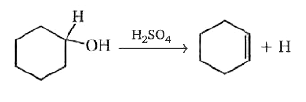Which of the following reaction is reaction is used to make a fuel cell .
Cds+2Ni(OH)3(s)→CdOs+2Ni(OH)2(s)+H2Ol
Pbs+PbO2(s)+2H2SO4(aq)→2PbSO4(s)+2H2Ol
2H2(g)+O2(g)→2H2Ol
2Fe(s)+O2(g)+4H+aq→2Fe2+aq+2H2Ol
The correct Answer is:C
To determine which reaction is used to make a fuel cell, we need to analyze the electrochemical process involved in a fuel cell. A fuel cell typically involves the reaction between hydrogen and oxygen to produce water, along with the generation of electricity.
1. Understanding Fuel Cells:
- A fuel cell is a device that converts chemical energy directly into electrical energy through an electrochemical reaction.
2. Identifying the Key Reactants:
- The primary reactants in a hydrogen fuel cell are hydrogen (H2) and oxygen (O2).
3. Electrochemical Reactions:
- In a hydrogen fuel cell, the reactions occur at two electrodes: the anode and the cathode.
- At the anode, hydrogen gas is oxidized:
2H2→4H++4e−
- At the cathode, oxygen is reduced:
O2+4H++4e−→2H2O
4. Overall Reaction:
- Combining the half-reactions gives the overall reaction for the fuel cell:
2H2+O2→2H2O+energy
- This reaction shows that hydrogen and oxygen produce water and release energy, which is the principle behind fuel cells.
5. Evaluating Options:
- Now, we look at the provided options:
- Option A: Cadmium and nickel - Incorrect, as these are not the reactants used in a fuel cell.
- Option B: Pb and PbO2 - Incorrect, as this does not involve hydrogen and oxygen.
- Option C: 2H2+O2→2H2O - Correct, as this is the reaction used in fuel cells.
- Option D: Iron (Fe) - Incorrect, as iron is not involved in the basic hydrogen-oxygen fuel cell reaction.
6. Conclusion:
- The correct answer is Option C: 2H2+O2→2H2O.
- A fuel cell is a device that converts chemical energy directly into electrical energy through an electrochemical reaction.
- The primary reactants in a hydrogen fuel cell are hydrogen (H2) and oxygen (O2).
- In a hydrogen fuel cell, the reactions occur at two electrodes: the anode and the cathode.
- At the anode, hydrogen gas is oxidized:
2H2→4H++4e−
- At the cathode, oxygen is reduced:
O2+4H++4e−→2H2O
- Combining the half-reactions gives the overall reaction for the fuel cell:
2H2+O2→2H2O+energy
- This reaction shows that hydrogen and oxygen produce water and release energy, which is the principle behind fuel cells.
- Now, we look at the provided options:
- Option A: Cadmium and nickel - Incorrect, as these are not the reactants used in a fuel cell.
- Option B: Pb and PbO2 - Incorrect, as this does not involve hydrogen and oxygen.
- Option C: 2H2+O2→2H2O - Correct, as this is the reaction used in fuel cells.
- Option D: Iron (Fe) - Incorrect, as iron is not involved in the basic hydrogen-oxygen fuel cell reaction.
- The correct answer is Option C: 2H2+O2→2H2O.
Similar Questions
Knowledge Check
Which of the following reactions can be used to make ethyl
isocyanide?ACH3CH2NH2+CHCI3KOH−−−−−→ΔBCH3CH2Br+AgCN→CCH3CH2−NH−C∣∣O−HPOCI3−−−→DCH3CH2Br+KCN→Which of the following reaction is an elimination reaction ?
A B
B C
C Dboth (a) and (b)
Dboth (a) and (b)Which of the following reactions can be used to prepare lactones (cyclic esters)?
A B
B C
C D
D
Which of the following reactions represents SN reaction ?
View SolutionWhich of the following reactions is used to prepare sulphuryl chloride ?
View SolutionWhich of the following reactions is a decomposition reaction ?
View SolutionWhich of the following methods can be used for making the bacterial cell " competent" ?
View SolutionWhich of the following methods can be used for making the bacterial cell " competent" ?
View Solution
